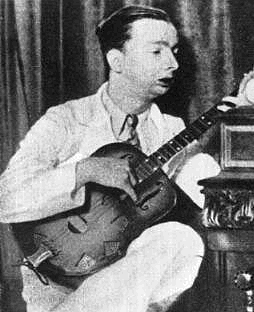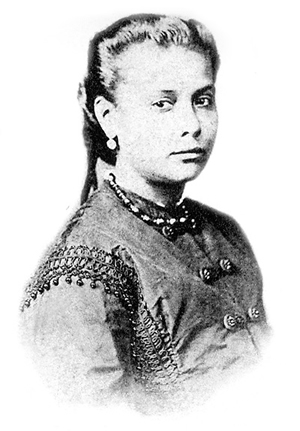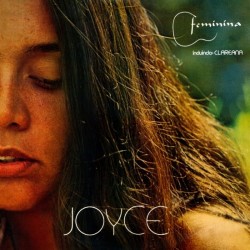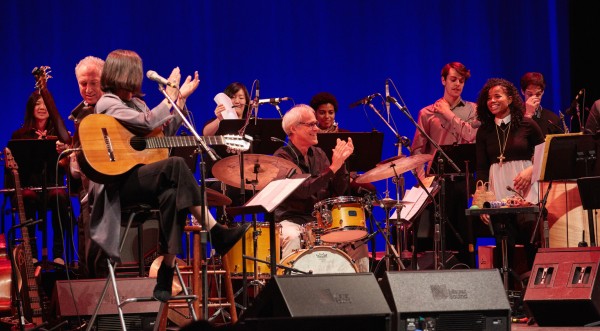Music Feature: Joyce Moreno at Berklee
When she composes a song, she said, it’s her guitar, rather than her voice, that “chooses the key. The guitar is the boss.”
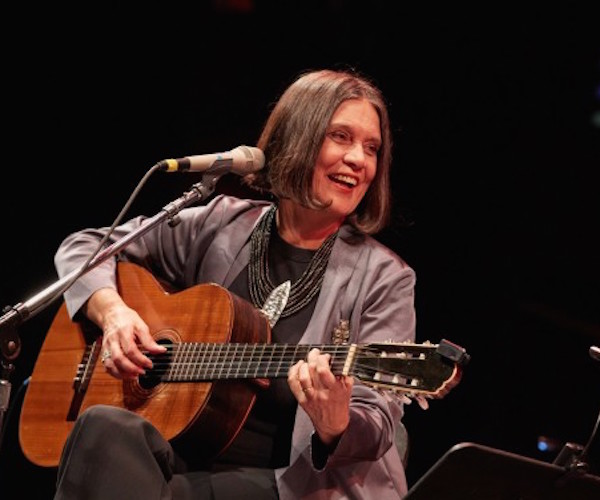
Joyce Moreno in concert at the Berklee Performance Center. Photo: Dave Green.
By Evelyn Rosenthal
Although Berklee College of Music has brought to Boston musicians from many of the world’s great musical cultures, it seems to have a special connection to the music of Brazil. In recent years the college has sponsored residencies and concerts by Rosa Passos, Ivan Lins, and Guinga, all master composers and musicians. This year, from December 6 to 10, the focus was on the music of Joyce Moreno, a prolific second-generation bossa nova composer, jazz-inflected singer, and distinctive guitarist whose music has been recorded by many of Brazil’s greatest artists, as well as in her own extensive catalog. The day before the culminating concert, I sat in on one of her Berklee clinics, where students, faculty members, and area Brazilian music fans had a chance to hear the story of her life and career, intertwined with a musically illustrated history of the two Brazilian music forms most familiar to North Americans, samba and bossa nova.
Moreno, who was known as simply “Joyce” until reclaiming her surname a few years ago for the sake of Internet searches, was drawn to composing from an early age. As she told the roomful of attendees, she would put her schoolwork to music in order to memorize it. Growing up in Rio with her mother and two older brothers, she had a front-row seat at the burgeoning of bossa nova in the late 1950s and 1960s. One brother, who played guitar, often brought home friends like Roberto Menescal and Carlos Lyra, two seminal bossa nova composers. Though still a young child, she said, she was “paying attention to everything they did.” By her teens she was studying music theory and classical guitar.
Although she didn’t go much further with formal music studies, she ended up learning her craft from some of Brazil’s greatest composers and lyricists. Antonio Carlos Jobim and Luiz Eça would open their homes to her and other younger musicians—Dori Caymmi, Marcos Valle, Ivan Lins—and listen to their songs, show them chords, and share what they were working on. The bossa nova pioneers were openhearted and generous, none more so than Vinicius de Moraes, the eminent poet, playwright, and diplomat who wrote lyrics for music by Jobim (including their most well-known song, “Garota de Ipanema,” which became the English “Girl from Ipanema,” and “Chega de Saudade,” acknowledged as the first bossa nova) and by guitarist and composer Baden Powell, among others.
That openness, she indicated, is not so much in evidence in Brazil anymore. Neither is the music closest to her heart—samba and bossa nova—now that the musical culture (like that in the U.S.) has been overtaken by mass-produced pop music, and radio stations (also like the U.S.) are mostly run by giant companies that dictate playlists from ever-narrowing segments of musical genres. The Brazilian music tradition, she said, “is a tree with roots and branches, fruits and flowers of different kinds.” Like jazz and Cuban music, she pointed out, it began at the end of the 19th century with a mixture of African, European, and indigenous roots. But now Brazilian music is facing what she called a “very complicated moment: My people tend to forget everything that happened in the last century.”
Concern about losing such a rich musical heritage led her to conceive a series of children’s television programs for broadcast in Rio’s schools focusing on the childhoods of great Brazilian composers. Subjects include Dona Ivone Lara, now 93 years old and the first female composer of samba enredo (Carnaval songs), who had to publish under a male cousin’s name when she started out; Noel Rosa, who overcame being bullied on account of his disfigured chin and became one of samba’s most important composers; Dorival Caymmi (father of Dori), who, she said, “invented Bahia, together with Jorge Amado in literature,” with his songs about life and love and the sea in that northeastern state; Ary Barroso, composer of probably the most famous Brazilian song, “Aquarela do Brasil” (“Brazilian Watercolor,” known here as simply “Brazil”); and Chiquinha Gonzaga, a composer and conductor born in 1847. An early feminist who championed abolition (slavery in Brazil ended only in 1888) and author’s rights, Gonzaga left her marriage to an authoritarian military man, Joyce said, with the words, “Sir, I cannot conceive of life without harmony, so I’m leaving you.”
To the delight of everyone in the room, she punctuated her history lesson with music, playing her guitar and singing such classics as Lara’s “Sonho Meu,” Rosa’s “Feitiço da Vila,” Barroso’s “Na Baixa do Sapateiro” (sometimes called “Bahia”), and Caymmi’s “Pescaria” (aka “Canoeiro”), as well as Vinicius de Moraes’s “Medo de Amar” (for which he wrote both music and lyrics) and Jobim’s masterpiece, “Aguas de Março” (“Waters of March”). She also performed “Chuvisco,” a lively xote (a Northeastern rhythm somewhat akin to reggae) from one of her best albums, Just a Little Bit Crazy. She hadn’t sung it in a long time, and she referred to its hard-to-reach notes at the top of her vocal range when the discussion turned to her writing process. When she composes a song, she said, it’s her guitar, rather than her voice, that “chooses the key. The guitar is the boss.” In fact, she added, when the great Elis Regina was recording Joyce’s “Essa Mulher” for Elis’s 1979 album of that name, she also asked to record “Feminina,” which Joyce had not yet released. She was to play guitar on the cut. But Elis found the key too high, and the lower key changed the guitar voicings in a way she didn’t care for, so the song never appeared on Essa Mulher. A “lucky” thing, Joyce said, as it would have been stamped with Elis’s strong vocal personality—“it would have been her song.” Instead, her own version—the title tune of her 1980 album Feminina—became the one that really launched her career.
“The guitar is boss” also applies to creating lyrics: “The music comes first and will suggest syllables, and from then on I’ll find a story to tell.” (This reminded me of Paul McCartney’s description of coming up with the words to “Yesterday,” which started out as “Scrambled eggs.”) Her husband and longtime drummer Tutty Moreno chimed in from the back of the room, revealing that her writing process also includes “long, long showers!”
Asked about the newest crop of Brazilian composers and musicians, she lamented that “Nobody surprises me anymore,” but she appreciates some who have been around for a number of years and might be described as part of a third wave of bossa nova and MPB (Música Popular Brasileiro), including the guitarist-composers Guinga, Sergio Santos, and Chico Pinheiro. She also sounded pleased with a newer phenomenon, the rise of young vocal groups who sing both a cappella and with instruments, such as the Rio-based Ordinarius.
As befits Berklee’s beginnings as a jazz school, and her own love for the American form, Joyce wound down the session with a verse of Cole Porter’s “Let’s Do It” and another song she introduced as “Cole Porter goes to Bahia,” “Love for Sale”; both tunes appear on her recent album of jazz standards, Cool.
After the two-hour session, I had a chance to interview her about her beginnings and some of her influences. Here is a condensed and edited version of our talk, followed by a note on the concert that culminated her residency.
The Arts Fuse: When you were starting out, did you have any particular guitar heroes whom you wanted to play like?
Joyce Moreno: Well, João Gilberto, first, and of course jazz guitar players, like Barney Kessel, Jim Hall, Joe Pass—I really admired those guys a lot. But that was more electric guitar. On the acoustic guitar, which is what I do, João Gilberto, definitely, and also a big influence for me was Dori Caymmi. Just watching him play was a big lesson for me. I learned a lot from him.
AF: I read in another interview that when you first performed in 1968, Brazilians were scandalized to hear you sing songs you had written from your own experience.
Moreno: It was not from my own experience, actually, but I was writing in the first person of the feminine. That was the scandal. I actually didn’t have a lot of experience to talk about yet; they were songs that I wrote when I was 18 or 19 years old. But the content was considered scandalous—songs where I said I had no intention of getting married, and songs where I emulated an experienced woman and said, “My man doesn’t love me,” and all that. But the big problem was the use of the self lyric in the feminine, because it was not acceptable at that time. Only if it was a man writing. There were a lot of male authors who would write as a woman speaking, and that was never a scandal. But when a woman was writing in a feminine tense, that was considered inappropriate.
AF: How did the jazz influence make its way into your music?
Moreno: We always listened to a lot of jazz at home. My mother used to like old records, like Benny Goodman, Tommy Dorsey, and that stuff from her time, and Sinatra, Bing Crosby. And then my brothers would listen to more modern things, like Modern Jazz Quartet and Dave Brubeck, and Ella Fitzgerald and Louis Armstrong. I listened to that as a child, and from that it was an easy leap to more modern jazz.
AF: Your style and phrasing are very jazzy. Were you aware when you started singing in a more jazz kind of idiom that you were doing that on purpose, because you loved jazz?
Moreno: No, I never thought about that. I listened a lot. A singer that I liked very much when I was a teenager—when I was a child, actually, not even a teenager yet—[is] June Christy. I like her phrasing a lot, and even today, if I go back to her records I can understand a lot of influence that [she] might have had on my own phrasing.
AF: Interesting. Her vocal quality is not unlike yours; she also didn’t use a lot of vibrato.
You talked about your writing process, how it starts with the guitar, with the music. What about when you write with partners? I know you’ve written with [lyricist] Paulo Cesar Pinheiro, among others.
Moreno: I do it both ways. With Paulo Cesar he usually gives me the lyrics and I put music to his lyrics. And with other partners who are musicians, like Edu Lobo, Marcos Valle, João Donato—no, João Donato’s a different thing, because he gives me a little piece of music and I have to create the rest of the music and the lyrics. He’s a very lazy partner! [laughs]. But with Edu Lobo, Marcos Valle, with other partners, they will bring the music to me and I will write the lyrics.
AF: It’s so great that they still do that in Brazil, writing with partners.
Moreno: It’s fun to write with partners. They don’t do this here?
AF: Well, I guess they do, but I think those here who sing and write their own songs often don’t also work with partners. Brazilians seem to do both—for example, Milton Nascimento writes on his own but he also writes with Fernando Brant.
Moreno: Yes.
AF: Your vocals always sound so effortless and clear and relaxed. How do you keep your voice in shape?
Moreno: I don’t do anything. Actually, there’s a lot of things that I don’t do—like I don’t smoke, I don’t drink—and I try to have a healthy life. And sleep is super important. I need to rest, to sleep well, and if I don’t, I’m doomed.
AF: But you don’t do any vocal exercises?
Moreno: No.
AF: On your latest album, Raiz, you pay tribute to some of the greatest bossa nova composers—Roberto Menescal, Johnny Alf, Carlos Lyra, Baden Powell, Jobim and Vinicius—and you worked with many of them. What prompted you to do this kind of album at this point in your career?
Moreno: I always like to work on other people’s music. I think it’s very interesting, I have fun doing this. I have a little arranger inside myself—the arranger, so-called, because I never studied enough to call myself an arranger. But I make my own arrangements and I like to create different ways of playing the songs, different rules, different harmonies. So when I do this kind of album I basically work on that.
AF: And what’s so great about it is hearing those songs that we’ve heard a million times before, and giving them a fresh—
Moreno: Bringing something fresh, bringing some new information to the music.
AF: You’ve also done a number of projects with other people, like Nelson Ângelo, Toninho Horta, Dori Caymmi, and Donato. And you did a “Bossa Duets” album, too. Are there any other collaborations you’re thinking about? People that you want to work with that you haven’t worked with yet?
Moreno: Well, I don’t know; I have worked with a lot of people. I like to work in collaboration—it’s always good, it’s fun, it’s a nice thing to do. If I have a chance I always like to do that. But I don’t know—I don’t make plans so much in advance. Things just go, they happen.
AF: What are you working on now?
Moreno: I’m working on a future project for next year; I think it’s going to be with all original songs.
AF: And the standards album that you mentioned, Cool, that was released this summer? I didn’t know about that one.
Moreno: This is something that the Japanese always wanted me to do, and I didn’t want to do it. I thought it would be like, you know, everybody does that. But then I said okay, now I think I can do this in my own way, and make this music mine a little bit. So that’s what I tried to do with this one. And I have this album with Kenny Werner that just came out too, called Poesia. It’s all ballads, just piano and vocal, and we’re going to do some tours with that.
AF: What tunes will you be performing at the Berklee concert?
Moreno: It’s all my own music, my compositions, it goes from the most known like “Feminina,” “Mistérios,” “Essa Mulher,” “Monsieur Binot,” those songs are all there. But also some less known ones like “Banda Maluca,” and newer ones like “Boiou.”
—————————

Students Miriam Elhajli Rodriguez, Yoshie Nakayama, Gerson Eguiguren, and Marco Mares singing with Joyce. Photo: Dave Green.
The concert on Thursday, December 10, brought together a large ensemble of top-notch students, faculty members, and special guests, in a show that demonstrated Joyce’s brilliance and versatility as a composer and musician. Of the 15 songs on the program, 11 were arranged or transcribed and adapted by students and 4 by faculty members Matthew Nicholl, music director for the evening; flutist Fernando Brandão; and vocalist and arranger Lee Abe.
Standouts included Nicholl and Abe’s stunning arrangement for “Boiou,” which featured the excellent five-member vocal section, and Brandão’s arrangement of the swinging samba “A Banda Maluca,” which began with Joyce on guitar and voice, Brandão on flute, and the effervescent Anne Nêgah Santos on percussion, and included some lovely writing for the four-member flute section.

Brazilian Berklee students Raphael Lehnen (drums), Anne Nêgah Santos (percussion), and Edu Mercuri (guitar), with flutist and Berklee faculty member Fernando Brandão. Photo by Dave Green.
“Tema pro Baden,” a samba arranged by Parham Haghighi, featured terrific solos by Edu Mercuri on guitar and Jeremy Alvarez on flugelhorn, and wordless vocals by Joyce and three female vocalists. Berklee professor and guitarist John Stein contributed a tasty solo on “O Chinês e a Bicicleta.” Joyce invited one vocalist, Ana Maria Villa—Joyce’s “stand-in” during the fall semester’s rehearsals of the charts—to sing the haunting “Mistérios” (with some of Joyce’s most poetic lyrics, and music by her and Mauricio Maestro). Villa’s rendition was heartfelt and beautifully sung, with Joyce providing the harmonies.
For her signature tune, the sparkling samba “Feminina,” Joyce was joined by guests Hélio Alves—a pianist based in New York, Berklee alum, and longtime member of her band—along with Tutty Moreno on drums and Oscar Stagnaro, Berklee’s Latin Studies program advisor and coordinator of their Latin Music and Culture Celebration, on bass. Again, the vocalists added interest to the arrangement, with three of them joining in on the lovely call-and-response coda.
By the end of the show, everyone on stage, including Joyce, was absolutely beaming; you could sense their joy in working together to create something new and exciting with such remarkable compositions, and in learning from one of the most inspiring musicians ever to come out of that most musical of countries, Brazil.
Evelyn Rosenthal is the former editor in chief and head of publications at the Harvard Art Museums. She is also a professional singer, specializing in jazz and Brazilian music. She writes about musical theater, music, and books for the Arts Fuse.

